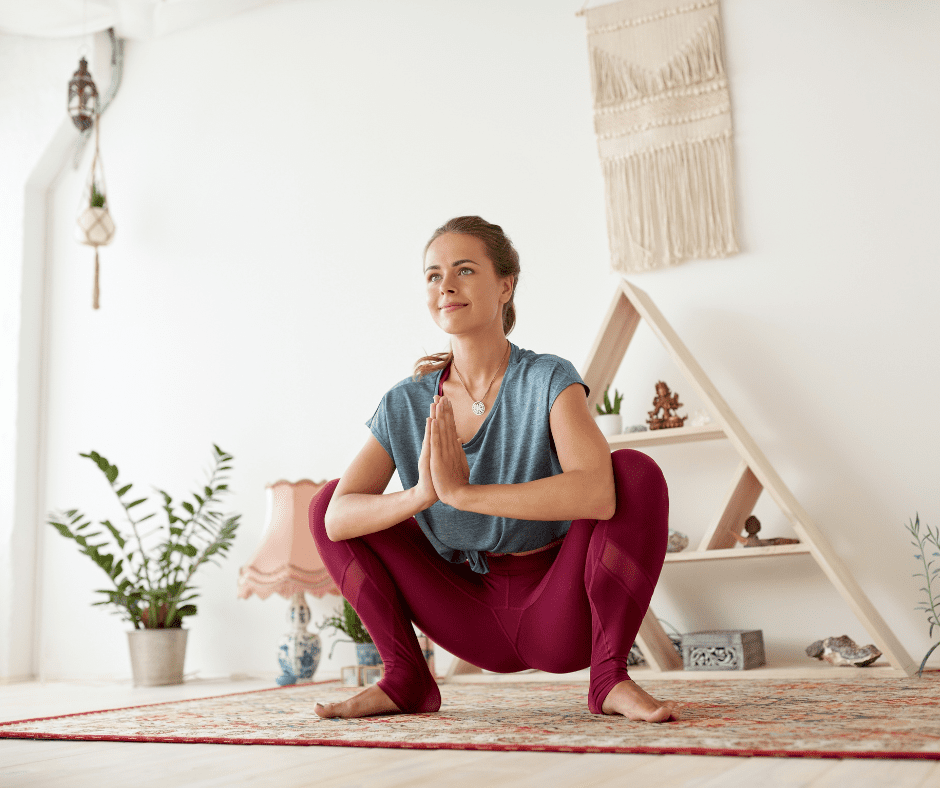You’ve heard about Yoga…
You’ve heard about these ‘energy wheels’ called Chakras…
You want to live a healthy, vibrant life.
But maybe you’re unsure how these pieces fit together?
Yoga, as an ancient healing modality, is both a practice and a way of living.
Yoga, you might say, is a mode of being; one in which we are connected to ourselves and to the world around us, in a harmonious way.
In this Chakra series, we’re going to explore how Yoga (specifically, Yin Yoga) can help you bring balance and harmony to your life. Some simple concepts, combined with a yoga pose or two a day, can help restore balance in the areas in our lives we need it most.
So, what is the Root Chakra?
The Root Chakra (also known as muladhara chakra) is your primary energy center in the chakra system. It’s located in the bottom of the pelvis, at the base of your spinal column.
Your root is responsible for your living connection to the earth, and therefore to nourishment, nurturance, safety, and belonging.
But how do you know if your root chakra is in need of balancing?
Here are some common symptoms of root chakra imbalance:
– Chronic fatigue
– Malnourishment
– Weak or compromised immunity
– Brittle teeth, bones, hair or nails
– Symptoms of depression
– High levels of fear
When this energy center is balanced, and energy is flowing well through your root, you’ll feel vibrant, in touch with your body and the body of the earth, at-home in yourself, and safe in the world.
Your root chakra is the first to develop, from ages 0-2 years old. The themes, dominant feelings, and beliefs we develop during this time are centered around our root, and will leave energetic imprints that inform how we live throughout the rest of our lives.
The amazing thing about Yoga as a practice, is that it provides us with the tools, the skills, and the awareness to self-heal, and therefore self-direct, our lives. This means that we are never without the power to help ourselves feel better, no matter how long we have been living with symptoms of imbalance.
It’s never about being a ‘perfectly balanced’ person. But it is about cultivating a deeper awareness about who we are, and unravelling the layers that keep us from expressing and living that truth.
So, let’s take a look at 2 Yin Yoga poses for bringing fresh energy, clearing blockages, and restoring balance in your foundational root chakra.
Follow Along With This Video, Or Continue Reading Below
Yin Yoga Poses to Balance Your Root Chakra
- Dangling Pose
Focus: Lower Back / Root Chakra
Level: Beginner-Friendly
Stand with your feet hip-width apart, feeling strong and rooted to the ground you stand on.
Take a moment to breathe in through your nose, and imagine the breath traveling out through your feet and into the earth, rooting you down as you exhale.
Once you’re feeling grounded, bend your knees and lean forward to rest your elbows on the top of your thighs. If it feels okay, let your head release toward the floor. The idea here is to lengthen your spine, and provide a gentle stretch for your lower back (root chakra region).
With your tailbone high and your head low, take a few deep breaths to empty your mind. You may feel your spinal column releasing here. Stay connected to the strength of your feet, pressing into the floor.
Stay here for 1-3 minutes.
When you’re ready to come out of the pose, bend your knees even deeper and roll up to standing. - Squat
This is the quintessential yoga pose for connecting to the earth. We are born with bodies that effortlessly squat down, but tend to lose the flexibility in our feet, ankles, and hips as the years go on. The yoga squat is a great way to get grounded again.
Stand with your feet a bit wider than shoulder-width apart. Turn your toes slightly outward. When you’re ready, bend deeply into your knees and begin to release your tailbone toward the floor. Come down as far as you can. If your heels lift up off the ground, slide a blanket under them to close the space. Keep your spine long, and breathe.
Stay here for 1-5 minutes.
When you’re ready to come out of the pose, either press into your feet to lift your seat toward the sky and roll up to stand, OR, release down onto your butt (use your hands to help you). - Flow
You can practice these 2 Yin Yoga poses separately, or flow between them. Here’s how you might blend the two together: hold dangling pose for 1-3 min, then release down into a squat for 1-5 minutes, and return to dangling.
When you feel complete with these poses, take a moment to sit on the ground or in a chair to reflect on how you feel. Notice any sensations in your body, especially your feet, legs and lower back. Notice the kinds of thoughts your having, or emotions you’re experiencing.
Because the root chakra is related to such a deeply primal part of us, it can stir up long-held feelings, beliefs, and emotions, especially around who we are, how we belong, and how connected and vital we feel as human beings.
Balancing your chakras is not always a pleasant experience (at first), but the journey through the emotions and sensations that arise is what molds us into clearer, happier, and healthier versions of ourselves.
I hope you’ve found this article (and video) helpful! If so, please share it with someone you love.
With gratitude,
Jaylyn
Share it here:


